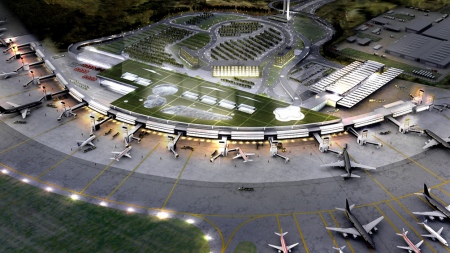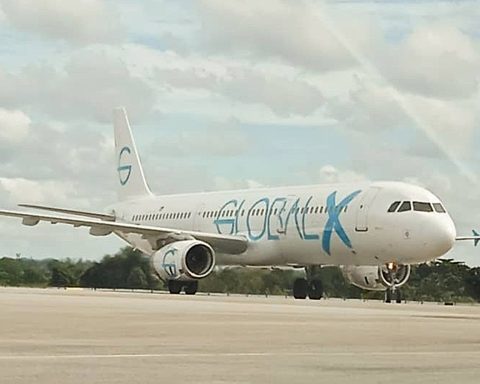The movement of passengers by air in Argentina is already at the same level that existed before the crisis caused by the Covid-19 pandemic, and a growth for the next year of between 25 and 30% is projected, with an increase in scheduled routes and the incorporation of new aircraft in the different companies that operate in the country, according to data collected by Télam from different aeronautical sources.
In accordance with data provided by the International Air Transport Association (IATA), airlines, airport operators, companies that operate at airports (restaurants, shops, etc.), aircraft manufacturers and air navigation service providers they employ more than 80,000 people in Argentina.
Additionally, when purchasing goods and services from local vendors, the sector supports more than 85,000 jobs and, additionally, the salaries that the industry pays its employees are totally or partially transferred to the consumption of goods and services, sustaining another 50,000 jobs.
It is estimated that tourists who arrive in Argentina by air and spend their money in the country They help support another 130,000 jobs.
The local cabotage market is led by Aerolíneas Argentinas with 67%followed by Flybondi with 17% and JetSmart with 16%, according to November statistics compiled by the National Civil Aviation Administration (ANAC).
Regarding the movement of international flights, ANAC maintains that during June 2022 the airlines ITA Airways and Viva Colombia (Fast Colombia SAS) began to operate in the countrywhile in October Aero República began operating and in November Emirates returned and Latam Ecuador and Líneas Aéreas Costarricenses joined.

In parallel, other international airlines that were already operating since the resumption of flights after the pandemic, such as Air France, KLM, British Airways; American Airlines, Delta, United, Aeroméxico, Copa Airlines, Avianca, Latam Chile, Gol, Paranair, Iberia, Level, Lufthansa, Boliviana de Aviación, Sky Airlines, JetSmart Chile, Swissair, Ethiopian Airlines and Air Europa, They resumed their pre-pandemic frequencies.
Jorge Newbery Airport, with a movement in November of 1,225,585 passengers, was the one with the highest volume, followed by Ezeiza, with 666,203; Cordoba, with 196,809; Mendoza, with 188,945; Bariloche with 149,470¸ Puerto Iguazú; with 115,979; Jump, with 113,911; Ushuaia, with 100,709; El Calafate; with 86,621 and Neuquén, with 85,614, among the top ten.
Aerolíneas Argentinas estimates that it will close the year transporting eleven million passengers, while it projects more than 13 million for next year, which is the figure they registered before the pandemic, while for the first quarter of 2023 they program a growth of 4% compared to 2019, according to what company sources told Télam. .
Aerolíneas Argentinas was also the company that transported the most passengers to and from Brazil in September; the third with respect to Chile, after Latam and Sky; and the second regarding the United States, behind American Airlines.
The group’s current fleet is made up of 79 aircraft, made up of eight Airbus 330-200, eight Boeing 737-700, 29 737-800, seven B737 MAX 8 and 26 Embraer
Between January and November of this year, the flag carrier transported 8,699,340 passengers, which represents 95% compared to 2019, flying to 38 destinations, two more than it had in 2019 (Puerto Madryn and Valle de Conlara), with 79 routes and presence in all provinces, and 43 intersections, without going through Buenos Aires. Aires.
The president of the company, Pablo Ceriani, assured that the plan they have in place will allow make better use of aircraft and crews, with the perspective of “expanding the existing offer”.
Ceriani assured that they already left behind “the difficult years” characterized by the closure of tourism and the sanitary restriction that affected airlines around the world, and that today they are all experiencing processes of continued growth, although conditioned by the uncertainty derived from the international economic crisis and the aftermath of the war in Ukraine.
He also said that The expansion of the market led to the recovery of aircraft and the optimization of personnel in Airlines to respond, but warned that this evolution finds a “bottleneck” in access to inputs and aircraft repair shifts, which concentrate few firms worldwide.

During this year different variables influenced the growth of international passengers, such as the addition of flights to Peru and Colombia, new routes to Brazil, an increase in local incoming tourism; new routes for low cost airlines; restart and increase of operations from the interior to regional destinations and the return of summer routes.
Aerolíneas Argentinas increased its interprovincial routes, without going through Buenos Aires; It strengthened its Córdoba Hub and increased its regional flights, inaugurating routes between cities in Brazil and cities in the interior such as Córdoba, Mendoza, Salta, Bariloche, Ushuaia and El Calafate.
The same thing happened with JetSmart, which has a total of 72 domestic and international routes within the entire region, having recently inaugurated its international flights to Asunción, Paraguay, and Rio de Janeiro, Brazil, to which are added the frequencies that already existed with Chile, Colombia, Peru and Uruguay.
The manager of the company, Gonzalo Pérez Corral, maintained that they are projecting “For the month of December, close to 60% more seats will be operating of those that we operated in December 2019″, clarifying that “while domestic traffic is this strong and regional, in some cases, shows potential, international flow is still at 60 to 70% of the pre-pandemic movement”.
Good performance led airlines to resume their growth plans by adding planes: JetSmart already flies with eight and Flybondi with ten.
Flybondi received a few days ago the tenth plane, and they estimate to have twelve by the end of the year and end 2023 with 17 aircraft.
“This year will end with a potential close to 11.6 million passengers; It is still below the 16 million of 2019, but with demand exceeding supply. In 2023 we can close with 18 million; and the potential of the Argentine market makes it possible to think of 30 million passengers in the next five years,” said the CEO of the company, Marcelo Sana.

















